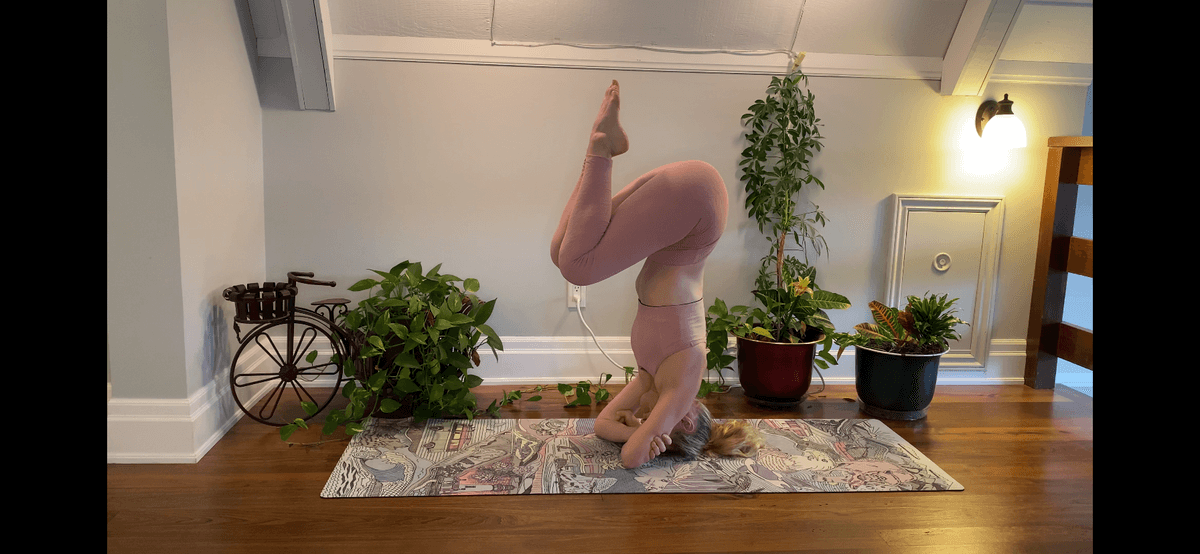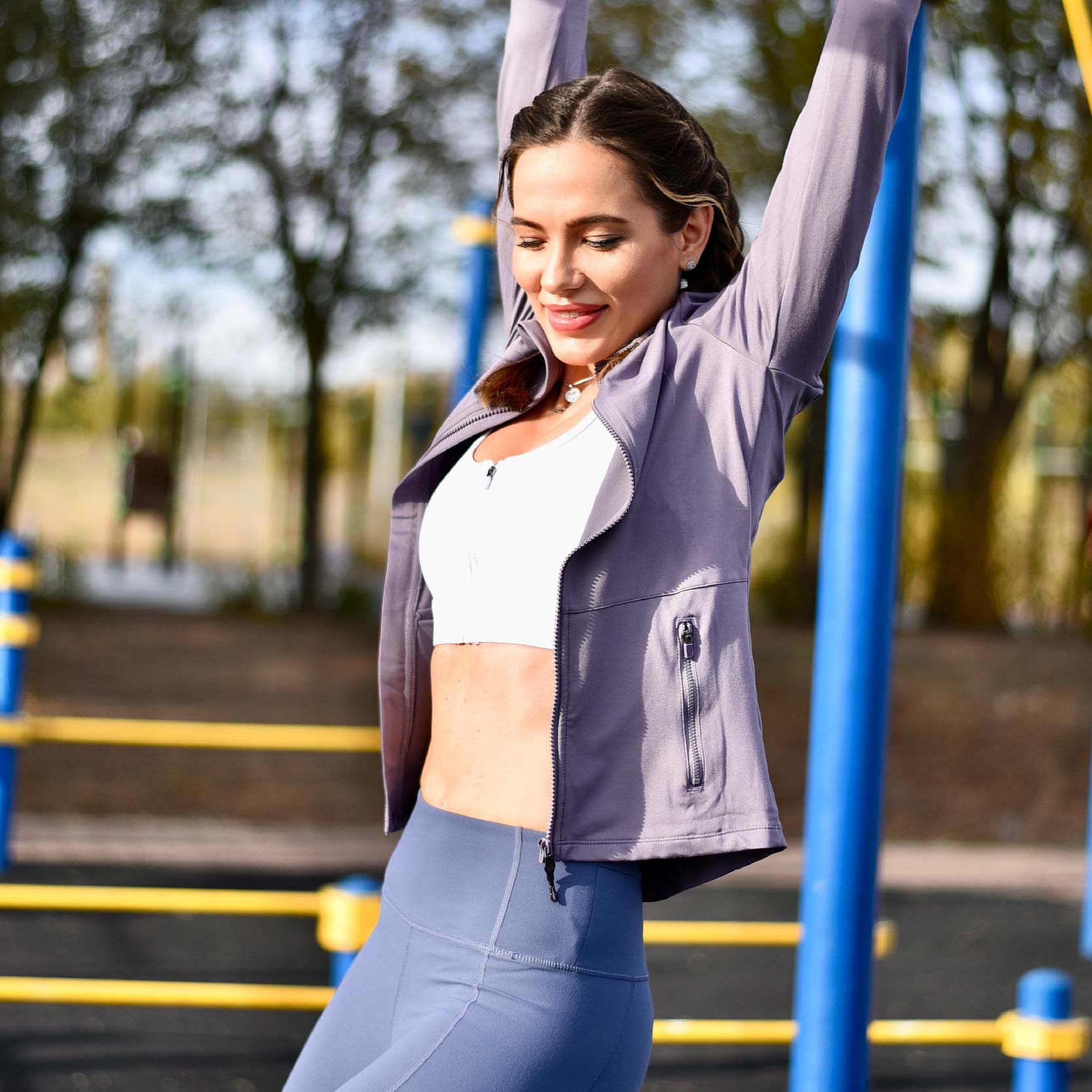What is hot yoga?(Benefits & Poses)
In recent years, hot yoga has become a trendy form of fitness. It provides all of the same advantages as regular yoga, such as reducing anxiety, increasing the body muscles and mobility.
When you are in a heated studio, hot yoga has the potential to provide your pulse, breathing, and joints with an even extreme and more intense workout. If you are curious about hot yoga and how it might help you, this article looks at this heat-inducing exercise, its benefits to your health, how to begin the workout, and some poses. Keep scrolling!
What Does "Hot Power Yoga" Mean?
Hot Power Yoga combines elements of two prominent modern forms of yoga: power yoga and hot yoga. The phrase refers to a wide range of class arrangements and yoga styles. Hot Power Yoga, like hot yoga, is done in a warm atmosphere to release muscles and increase perspiration.
"Hot" refers to a hot room above standard room temperature. You can have a scenario where the temperature may vary depending on your preference or your trainer's advice, but it is usually between 28 and 38 °C.
Hot power yoga sessions usually involve a wide range of positions, and the length of each session varies from venue to venue. In addition, unlike Vinyasa yoga, which is a calmer, more solemn technique, hot power yoga frequently involves music and robust interaction among the practitioners.
On the other hand, Vinyasa yoga has lost devotees lately due to assault claims against its creator. Some establishments may refer to their heated courses as "hot power yoga" rather than "Vinyasa yoga." As a result, it is a good idea to study the program outlines when enrolling.

Benefits of Hot Yoga
Hot Power Yoga Has These Additional Benefits.
Like any other yoga practice, hot power yoga provides mental relaxation and physical conditioning no matter the room temperature.
A hot climate can make yogic activities more challenging to practice. Some of the rewards may be worthwhile, especially if you want to improve in the areas listed below. When done appropriately and safely, hot power yoga has these additional benefits.
- 01: Improve The Lymphatic System
The lymphatic system is what acts as your body cleaning lubricant. The human body has ducts, receptors, and loose lymphatic fluid. It nourishes and detoxifies, emulsifies, and cleanses your body as oil does in an automobile engine.
The body's mobility is like the real engine for the lymphatic system. Your body contortions and muscular tensions compress and stroke the fluids within.
Every session, the bends, stretches, curling, and extending in each position act like high-powered flushes to purify your body and its natural lubrication system!
Toxins and tissue fluid move from the body through the lymphatic system and sweat glands. Hot yoga is the ideal catalyst for eliminating impurities and toxic materials through detoxifying and keeping your body in check and peak waste-busting conditions. - 02: It Improves Physical and Mental Balance and Flexibility
Yoga strengthens, balances, and stretches the body. Slow motions and deep breathing boost blood circulation and regular workout muscles, while maintaining a position might help you gain strength. - 03: It Relieves Stress
Stretching your muscles is how yoga positions operate. They can help you move more freely and feel less stiff or tired. You'll probably see advantages from yoga at any level rather quickly. in many cases, yogis have realized positive changes in their bodies after only eight weeks of yoga. Adults increased their mobility by up to 40%.
If you blend relaxation techniques with hot yoga practices, they help enhance a person's mental health. Yoga practice improves mental clarity and relaxation, raises bodily awareness, alleviates stress hormone patterns, calms the mind, concentrates focus, and improves cognition. - 04: It Promotes Weight Loss
Traditional yoga may burn up to 180 calories per hour for a workhorse person. Increasing the temperature might make you lose even more fat.
According to Colorado State University research, an hour-long Bikram yoga practice may burn up to 460 calories for men and 330 calories for women.
Even if hot yoga is not as rigorous as other yoga sessions, it will increase metabolism more than a typical yoga practice.

Benefits of Hot Yoga
- 05: Builds Strength
Hot yoga can shape and tighten your body if you want to trim and define it. Different yoga postures work out your muscular endurance, such as your abdominals, which focus on shaping and heating. Having various mixes will make you sweat and engage specific muscle tissue even more! Hot yoga has now become a common stress-relieving practice in recent years. It provides similar benefits as other yoga practices.
Simultaneously, it increased their mental well-being, quality of life, and consciousness, feelings that you can always control in your interaction and organizational setting. - 06: It Improves Circulation
Performing various yoga postures in extreme heat can provide a more rigorous workout for your cardiovascular, breathing, and bone systems than performing the same activity at room temperature. Heat exercise has given many yogis a platform to increase blood flow in the body more freely into the muscles, making them suppler, allowing you to extend further, bend more, and maintain postures for a longer duration than you can in a colder atmosphere.
One of the primary goals of hot yoga is to make you sweat a lot. Perspiring in a warm climate has the added benefit of improving circulation by releasing oxygen and nutritionally bloodstream to skin cells.

Hot Yoga Poses
Here are some of the hot yoga
01: Standing and taking deep breaths
Benefits:
* It trains you to use your whole lungs.
* Many people only employ a small portion of their pulmonary function.
* It stimulates circulation and opens the lungs, raising your core body temperature and conditioning your muscles for the workout.

Photo source: Online
02: Stand in a half-moon posture with your arms to your feet.
* It tightens and trims the waist, thighs, stomach, hips, and knees.
* It enhances and builds all of the muscles in the mid-body part, particularly the abdominal muscles.
* It improves spinal fluidity, corrects improper alignment, stimulates appropriate renal function, and aids in the treatment of liver and lung expansion, indigestion, and constipation.
* It improves the rectus abdominals, latissimus dorsal, lateral, pectoral, triceps muscle strength, and flexibility.
* It tones and strengthens the upper arms, shoulders, and belly; it increases the blood flow in the knee and ankle joints; and reduces rheumatism, inflammation, and gout in the legs.
* It aids in the treatment of spinal fractures and constipation in the lower back.

Photo source: Online
03: Eagle pose
* It increases sexual strength and stability by supplying oxygenated blood to the genital area and kidneys.
* It tones the ankles, hips, thighs, belly, and forearms.
* It increases hip, lower leg, and calf flexibility and range of motion while also strengthening the latisimus dorsal, quadriceps, and shoulder muscles.

Photo source: Online
04: Head-to-Knee Pose (Standing)
* It aids in the development of attention, patience, and determination.
* It aids in the development of attention, patience, and determination.
* It tenses the stomach and ankle muscles.
* It increases the flexibility of the hamstrings and hips.
* It engages all the thigh muscles, including the shoulder, quadriceps, latisimus deltoid muscles, scapula, and gluteus maximus.

Photo source: Online
Safety Tips during Hot Yoga Sessions
Hot yoga is typically safe if you're in excellent shape. However, like with most forms of physical activity, there are many considerations to make.
- Dehydration
While doing hot yoga, dehydration is a serious problem. It is critical to drink water beforehand, in between yoga exercises, and even after a hot yoga session. A moderate-protein shake may also aid in the replenishment of fluids lost during a hot yoga session. - Underlying Medical Condition
Many pre-existing medical issues may increase your chance of passing out in a heated environment. Ailments such as Heart failure, diabetes, vascular irregularities, anorexia nervosa, and background of fainting are all examples of risk factors.
If you have hypotension or low blood sugar, hot yoga may cause drowsiness or lightheadedness. Consult your doctor to ensure that hot yoga is healthy for you. - Pregnancy
Expecting women should get the advice of their specialist before engaging in hot yoga. - Heat Sensitivity Problems
If you've had issues with heat sensitivity before, you might want to stick to yoga that you can always practice at room temperature. If you feel uneasy, lightheaded or lose your breath when practicing hot yoga, you should stop immediately. Walk out of the room and go somewhere at room temperature to relax.

Things You Should Anticipate From a Hot Yoga Training Session
The key term that distinguishes hot yoga from other styles is "hot." Expect a lot of heat and plan on sweating. The room temperature will be above 95 degrees Fahrenheit, and dampness may be present. Your core body temperature will increase, your entire body will heat up, and you may have no absolute control throughout this activity. Pay attention to the following:
* Pace carefully and pay close attention to your body's requirements. If you're concerned with how you're doing, you're likely to overlook the rate of your respiration and mobility.
* If you're exhausted, take a short break and understand that you're just there for yourself.
* Anticipate a quicker warm-up in a hot yoga session than in regular yoga courses because the hot chamber requires less time to heat your joints. Following that, you will follow a guide through a sequence of yoga poses.
* The nature of the postures and how rapidly you progress through them may vary, and majorly everything will depend on the style of yoga you are practicing in the session.
Although Bikram is a defined series of over 20 particular actions, other forms of yoga, like plasma and vinyasa flow, are now provided hot, and the routines will vary from one style to another.

FAQs
How Long Should Hot Yoga Session Last?
The course will most likely last sixty to ninety minutes. Hot yoga practice is different, and only a guide will help you out, unlike other yoga sessions where the instructor does the poses with you.
What Should I Wear To a Hot Yoga Session?
Wear clothes that will keep you cooler when practicing hot yoga. Vapor clothing and gym gear with antibacterial characteristics are a good fit. Cotton soaks, which will come in handy when you sweat, your clothes will get denser, which will be uncomfortable; the lighter your fabric selections, the better, since they will save you from overheating even more.
Where Should I Begin Hot Yoga?
If you've never practiced yoga previously, you might want to start with a simple yoga session to determine if the trainer and location are a good fit for you. While you're there, inquire about hot yoga lessons and whether there are any classes for a new person.
You should also test out a few alternative yoga studios before committing to one. Inquire whether the yoga studio has free or reduced trial lessons so you can determine whether it's a good match for you.
If you're willing to try hot yoga, here are some pointers to get you started:
* Choose lighter, permeable textiles that can drain moisture away from your body.
* Carry a towel to cover the yoga mat, which could get slick when you feel hot. Remember to come with a piece of cloth for your hands and face in the hot yoga studio.
* Contemplate using special gloves and footwear to improve your grips in a hot yoga class.
* Carry a covered bottle full of cool water to sip on during your hot yoga practice.

Conclusion
Hot yoga is not for everyone. However, if you love regular yoga and want to take it to the next level, it might be the secret you're looking to explore. Hot yoga has several advantages for both the mind and the body.
It can make you lose weight and calories, increase bone mass, enhance cardiovascular health, and increase flexibility. It may also aid in the treatment of mental illness and anxiety.
Before participating in a hot yoga session, consult your physician if you have any health disorders, such as heart or artery troubles, hypertension, eating disorders, a history of collapsing, or heat sensitivity.





